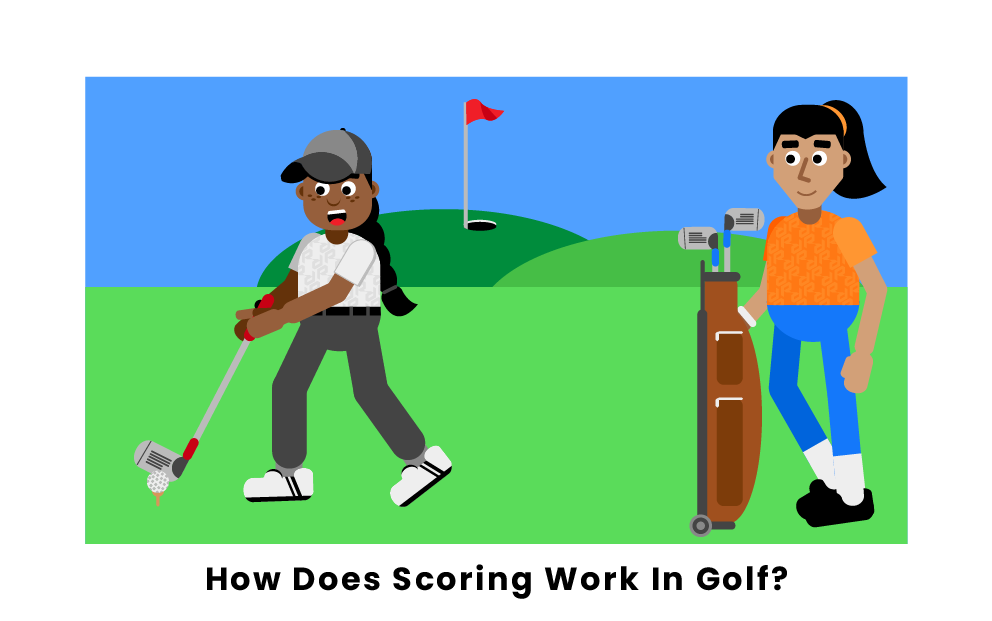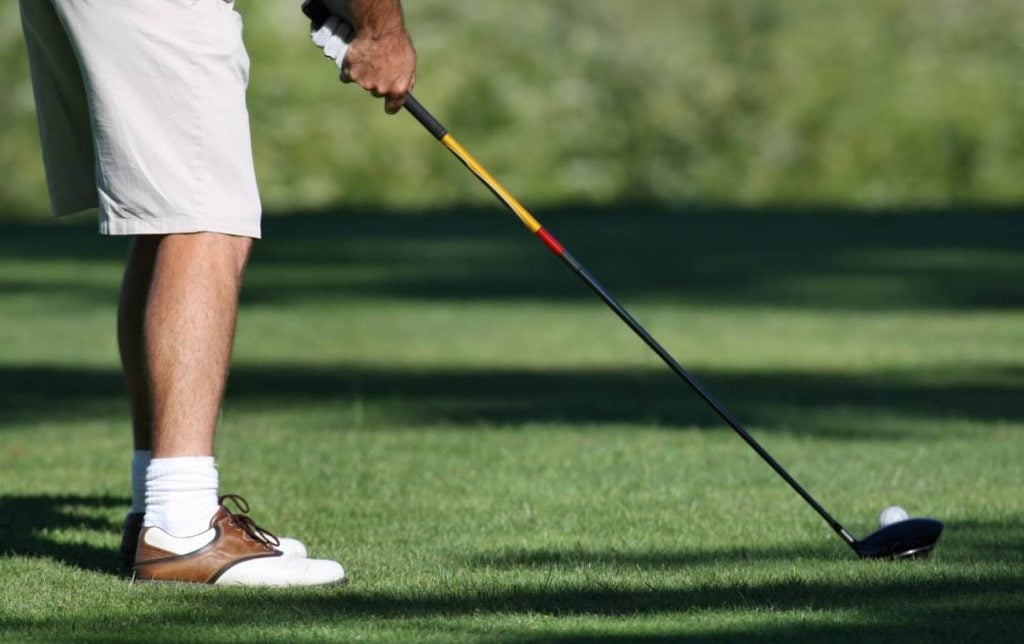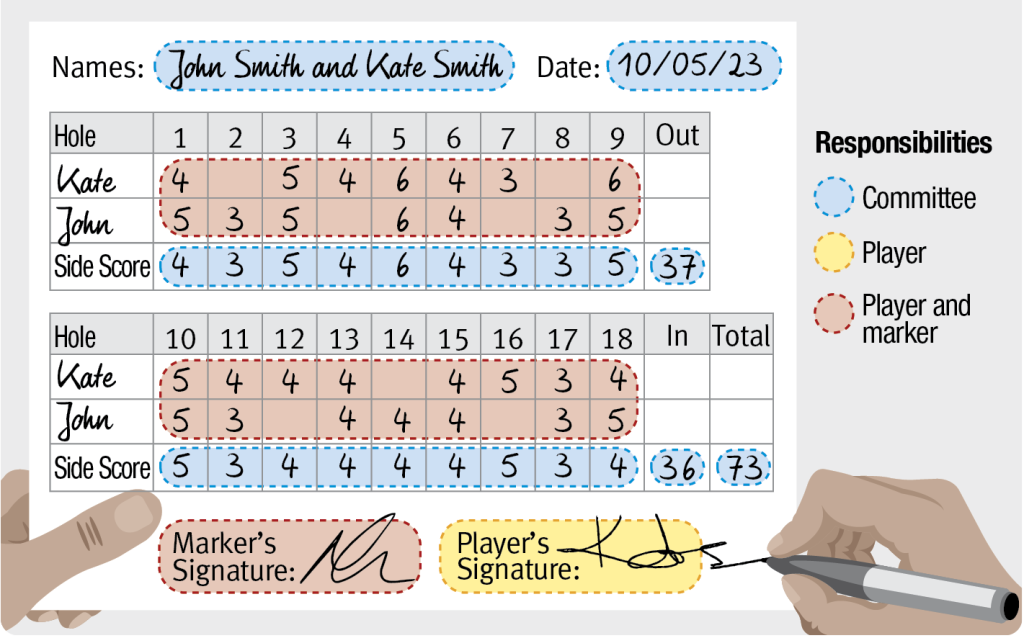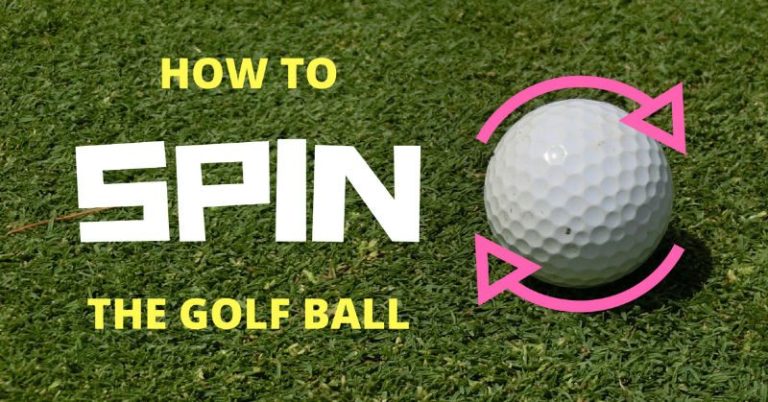Decoding the Game: How Does Match Play Work in Golf?
Key Takeaways:
- Match play in golf is a format where players compete against each other hole by hole, with the objective of winning more holes than their opponents to win the match.
- In match play, scoring is based on the number of holes won rather than counting strokes, which adds an element of strategy and allows for comebacks during a round.
- Handicaps can be used in match play to level the playing field, allowing players of different skill levels to compete on an equal basis.
- Concessions and gimmes are common in match play, where players can choose to “give” a hole to their opponent if they believe it is unlikely they will win, saving time and effort.
- Match play differs from stroke play in that it focuses on the individual holes rather than the overall score, which can lead to different strategies and decision-making.
- Professional match play events, such as the Ryder Cup and WGC Match Play, showcase some of the best golfers competing head-to-head.
- Amateur golf also features match play tournaments, including club championships and national amateur events.
- Preparation and strategy are key in match play, with players needing to adapt their game plan based on their opponent’s strengths and weaknesses.
- Managing emotions and maintaining focus is crucial in match play, as momentum swings and mind games can impact performance.
- Common mistakes to avoid in match play include being overly aggressive, underestimating opponents, and losing focus on individual holes.
- To enhance skills and enjoyment in match play, players should practice their short game, develop a strong mental game, and embrace the competitive nature of the format.
Introduction
In the fascinating world of golf, match play adds a thrilling dimension to the game. Discover the intricacies of this format as we explore how match play in golf works and its ultimate objective. Brace yourself for an engaging discussion that unveils the strategies, tactics, and rules that players employ to outshine their opponents on the course. Get ready to delve into the exciting realm of golf match play and unlock a whole new level of excitement on the fairways.

Explanation of match play in golf and its objective
Match play in golf is an exciting and dynamic form of competition. Players go head-to-head on a hole-by-hole basis. The goal is to complete each hole with the lowest score possible. Stroke play takes the total number of strokes into account, while match play just focuses on one hole. Whoever has the lowest score on that hole wins the hole. This is how the match itself is won.
Handicaps are assigned to players to make sure everyone has an equal chance. These handicaps are calculated before the match begins. Concessions and gimmes are also used in match play. Concessions happen when one player thinks the other’s shot will be successful. They don’t finish the hole. Gimmes are short putts that don’t need to be made. These practices make the game faster and more polite.
In conclusion, match play is a fun and competitive format for golfers of all abilities. Handicaps, concessions, and gimmes help make the game fair.
How Match Play Works
Match play is an exciting format in golf that adds a whole new level of strategy to the game. In this section, we will explore the ins and outs of how match play works, from the basics to scoring, handicaps, and even concessions and gimmes. Get ready to dive into this dynamic style of play and discover the tactics that can lead to victory on the golf course.

The Basics of Match Play
Match play in golf is a head-to-head battle. It is based on each hole, with the aim of scoring the lowest possible score. The one with the lowest score wins the hole, and this contributes to the result of the match. Match play differs from stroke play: stroke play is about total strokes over the course, but match play only looks at individual holes. This brings in an extra element of strategy and excitement.
Scoring in match play is unlike stroke play. Instead of counting strokes, it is about winning, losing, or tying each hole. If one player is ahead in holes with a few left, they can win without playing all 18. Handicaps are used to make it fair, for players of different levels.
Match play has been popular in pro and amateur tournaments. Tournaments like the Ryder Cup and WGC-Match Play show off the basics of match play. These tournaments are exciting and unpredictable, captivating viewers. Also, local clubs have match play competitions for amateurs. This helps them develop their game by learning how to handle pressure.
So, match play focuses on each hole, and is made fair with handicaps. It provides pro and amateur golfers with thrilling opportunities to show off their skills.
Scoring in Match Play
Match play scoring is different to stroke play. Instead of counting strokes, it’s a hole-by-hole competition. The lowest score takes the hole. To make sure players of different skill levels compete fairly, handicaps, concessions and gimmes are used.

This sportsmanlike behaviour helps keep a respectful atmosphere on the course. The aim is to win the overall match, with an insurmountable lead. Match play’s focus on achieving this lead sets it apart from stroke play.
In summary, match play is about winning each hole, and the match when a lead is insurmountable. Handicaps, concessions and gimmes ensure fairness and respect.
Handicaps in Match Play
Handicaps are essential in match play, enabling golfers of different skill levels to compete on even terms. These handicaps are decided by comparing the player’s scoring ability to the course difficulty rating, including factors such as the player’s scoring history.
This means that in match play, lower handicapped players may give strokes to higher handicapped players at specific holes, allowing each player an equal chance of winning the hole. The handicap system also encourages camaraderie between competitors, as it allows everyone to compete on an even platform.
In addition, concessions and gimmes contribute to the flow of match play, as they speed up play and demonstrate good sportsmanship. A concession is when one player abandons a hole after seeing their opponent in a better position, and a gimme is when an opponent concedes a short putt without requiring it to be played.
The Ryder Cup is one of the top match play events in professional golf, featuring intense international competition between teams from Europe and the US.
Concessions and Gimmes
Match play in golf includes concessions and gimmes. Players have the option to concede a hole if they think they can’t win. This can be done by admitting their opponent’s score is better, or simply indicating they’ll concede. Gimmes are short putts that are automatically made without needing to be completed. These putts are usually within a certain distance and accepted as “gimmies”.
Concessions and gimmes have advantages. They help the pace of play by reducing unnecessary strokes and time. They also promote good etiquette and sportsmanship. However, they must be used with integrity and respect for the rules.
Match play strategy can be influenced by concessions and gimmes. Knowing their opponent may concede a putt could impact decision-making during approach shots. These aspects make match play more exciting and competitive. They add a layer of strategy and sportsmanship.
Match play has mini-battles and the victor wins one swing at a time. Concessions and gimmes add a unique element to this format.
Differences Between Match Play and Stroke Play
Looking to understand the contrasts between match play and stroke play in golf? Explore an overview of stroke play and discover the distinctive features of match play. Dive into the fascinating differences between these two formats and delve into the intricacies of each style of play. Get ready to grasp the unique rules and strategies that make match play and stroke play distinct from one another.
Overview of Stroke Play
Stroke play in golf is all about the total strokes taken by a golfer to finish a round. Unlike match play where each hole is a separate game, stroke play considers all the holes played. The aim is to have the lowest score at the end. This format is popular in pro and amateur events.
In stroke play, players compete against all others, not each other on a hole-by-hole basis. The one with the lowest number of strokes wins. Every shot counts towards the final score; no concessions or gimmes. Accuracy and consistency over 18 holes is key.
Unique features of stroke play are that it looks at overall performance, rather than specific holes or matches. It can handle a large field and assesses golfer skills over multiple rounds.
Pro Tip: Consistency and focus are essential for low scores in stroke play. Don’t take too many risks that might lead to high scores, but concentrate on making consistent shots throughout the round.
Distinctive Features of Match Play
Match play in golf stands out from stroke play for its own special features. These are:
- Head-to-head battle: Players compete against each other hole-by-hole. The aim is to win as many holes as possible to win the match.
- Lowest score is the winner: Unlike stroke play, the lowest score on a hole decides who wins it.
- Handicaps: Handicaps even the playing field, making sure both players have an equal chance of victory.
- Concessions and gimmes: Players can skip a hole or give their opponent a short putt (gimme) without finishing the hole. This makes play faster and emphasizes etiquette and sportsmanship.
- Unique traits: Match play focuses on winning individual holes, while stroke play focuses on finishing the course in as few strokes as possible.
Other specific details may vary according to tournament rules or player preferences.
Events like the Ryder Cup and WGC-Match Play have been popular for decades, drawing in golf enthusiasts with their prestigious status and thrilling head-to-head matches. Amateur players also have match play opportunities, gaining valuable experiences and honing their competitive spirit.
Examples of Match Play Tournaments
Discover the world of match play tournaments in golf, where players face off in head-to-head competition. From professional events to amateur golf, we’ll explore the exciting examples of match play. Brace yourself for thrilling showdowns and fierce competition as golfers vie for victory in these engaging formats.
Professional Match Play Events
Professional match play events boast unique features such as elite competition and an electric atmosphere. Golfers must demonstrate skill to excel, plus strategic decision-making and mental resilience.
These tournaments provide ranking points and prize money. Victory can also raise a golfer’s reputation and open career doors.
Players and spectators alike are captivated by the unpredictability and excitement of these events.
Golfers must choose when to attack aggressively or use a more conservative approach. Plus, they must handle pressure without succumbing to emotions.
The world of professional match play tournaments is a thrilling showcase of talent, providing an exhilarating experience for fans and players. This format sets these events apart from other golf competitions, adding to the allure and prestige.
Match Play in Amateur Golf
Match play in amateur golf is an exciting format where players face off on a hole-by-hole basis. The lowest score determines the winner. Handicaps are key to ensure fairness. Calculations and applications of handicaps are necessary.
Concessions and gimmes are also allowed. This makes match play different from stroke play, which focuses on total strokes.
Amateurs taking part in match play tournaments will find it thrilling and competitive. It’s a great way to test their skills against opponents and develop them under pressure. It also builds camaraderie between players.
In match play, golfers can make more strategic decisions for each hole. They can adjust their approach based on their opponent’s performance.
A great example of match play is when an amateur golfer was tied with his opponent on the final hole of a tournament. Everyone was watching. The golfer hit a brilliant approach shot that almost touched the pin. His opponent conceded, highlighting the intensity and sportsmanship of match play.
It’s time to battle! Match play is a unique golf duel.
Tips for Playing Match Play
In the section on “Tips for Playing Match Play,” we will uncover valuable insights to enhance your performance on the golf course. With a focus on preparation, strategy, managing emotions, and avoiding common mistakes, as well as tips for enhancing your skills and overall enjoyment, this section will provide practical guidance to improve your match play game. So, let’s dive in and discover how to elevate your performance and achieve success on the golf course.
Preparation and Strategy
Match play golf demands prep and strategy. Analyze your opponent’s style and tendencies. Also, assess your own strengths and weaknesses. Know how the holes may favor certain players. This will inform decisions during the match.
John faced a formidable opponent in a tournament. He knew his opponent had a strong short game, but weak long shots. Therefore, John planned to keep his tee shots accurate and focus on precise approach shots. He prepared by studying past matches and practicing tricky shots. His strategy was executed perfectly. He won due to his prep and strategy. This shows how much it matters in match play golf.
Managing Emotions and Focus
Match play golf calls for managing emotions and keeping focus. This is vital for making strategic decisions and playing shots with precision.
- Stay Calm: Staying in control during match play is essential. Golfers must control their feelings, whether it be disappointment over a missed shot or joy after a successful one.
- Mindfulness Techniques: Practicing mindfulness activities can help golfers increase their mental clarity and concentration on the course. This includes concentrating on the present moment, not thinking about past mistakes or worrying about future results.
- Visualization: Doing visualization techniques allows players to mentally prepare for each shot. By imagining successful outcomes and positive images, golfers can boost their confidence and use their energy to reach their goals.
- Establish Routines: Making pre-shot routines can help golfers stay focused and get rid of distractions during match play. These routines act as anchors, allowing players to refocus after every shot and stay fully absorbed in the game.
Knowing that managing emotions and maintaining focus in match play differs from stroke play tournaments is important. In match play, players compete against one opponent per hole not against the whole field. This creates a more intense environment where every stroke matters.
To optimize performance, finding balance between intensity and relaxation is crucial. By using mindfulness techniques, visualization exercises, establishing routines, and staying calm during the game, golfers can improve their mental state and make sure they are well-prepared for match play.
Don’t miss out on utilizing these strategies for managing emotions and staying focused during match play. Incorporating them into your preparation will give you an advantage on the course and make golfing more enjoyable. Remember, success in match play requires skillful execution of shots and mastery of one’s emotions and focus.
Common Mistakes to Avoid
Many golfers make common mistakes to avoid when playing match play. This can hinder performance and even cost them the game. To increase chances of success, these errors should be understood. This includes:
- Not assessing the opponent.
- Lack of adaptability.
- Poor shot selection.
- Neglecting the mental game.
- Not using match play strategies.
Also, tactics used in stroke play may not work in match play. To better familiarize with its unique challenges, it is recommended to practice match play scenarios regularly. This will help improve the overall game and increase chances of success.
Enhancing Skills and Enjoyment
Match play in golf offers an exclusive chance for players to enhance their skills and have fun in a competitive environment. Participating in match play competitions helps golfers better their overall game and experience the thrill of head-to-head competition on a hole-by-hole basis. Here are some of the advantages:
- Strategic Thinking: Match play requires players to think strategically and alter their game plans based on the situation. This boosts golfers’ decision-making skills on the course.
- Focusing and Mental Endurance: Match play challenges players to stay focused and composed under pressure. This helps to build mental resilience, which is useful for all parts of golf.
- Learning From Rivals: Competing with other skilled players gives a chance to learn from their techniques and strategies. Golfers can view different playing styles and incorporate efficient methods into their own game.
- Course Management: Match play needs careful course management as each hole is a separate game. Players must consider factors like risk-reward scenarios, shot selection, and managing holes strategically – all of which contribute to overall skill improvement.
- Improving Short Game: The importance of the short game is shown in match play, as it can have a major effect on winning or losing individual holes. Participating in match play can help golfers refine their putting, chipping, and bunker play skills.
- Friendship and Sportsmanship: Even though match play is very competitive, it also promotes camaraderie and sportsmanship between opponents. Building positive relationships with fellow golfers adds to the pleasure of the game.
Apart from these points, match play provides an exclusive experience from stroke play as it focuses on individual holes and the direct competition between two players. This format adds an extra layer of excitement and difficulty to the game, boosting both skills and pleasure.
Sarah is an example of the benefits of match play. She was having issues with her course management skills and often made mistakes in shot selection during stroke play events. However, after she started participating in match play tournaments, she saw a huge improvement in her decision-making skills.
By competing head-to-head, Sarah learned to assess risks more effectively and alter her strategies based on her opponent’s gameplay. This eventually led to better scores and a remarkable enhancement in her overall game. Besides, Sarah found much joy in the competitive spirit of match play, which further sparked her love for the sport.
Conclusion
Match play golf’s end is marked when one player or team gets enough points to win. It’s structured as a round-robin or knockout, divided into different holes. Not strokes like stroke play, the goal’s to win most holes.
Players or teams battle it out hole by hole, with each worth one point. Same score on a hole means no point for either, and the game continues ’til one reaches the required points, concluding the match.
Match play has a unique feature: conceding a hole or match to the opponent. It can be strategic or due to an unbeatable lead. This concession can hasten or delay victory for either player or team.
In match play, the conclusion is based on reaching the required points. It offers a dynamic format where players or teams compete to get the necessary points for victory.
Some Facts About How Does Match Play Work in Golf:
- ✅ Match play golf is a format where two golfers compete against each other instead of the entire field. (Source: Golf Distillery)
- ✅ The objective in match play is to win more holes than the opponent, rather than posting the lowest overall score. (Source: Team Research)
- ✅ Each golfer hits their own ball, and the scores are compared after each hole. (Source: Team Research)
- ✅ The golfer with the lowest score on a hole wins the hole, and if the scores are tied, no points are awarded. (Source: Team Research)
- ✅ Handicaps can be considered in match play, with scores adjusted to level the playing field. (Source: AEC Info)
FAQs about How Does Match Play Work In Golf
How does match play work in golf?
Match play in golf is a head-to-head competition where players or teams compete to win individual holes rather than have the lowest overall score. Each hole is treated as a separate match, and the player or team with the lowest score on a hole wins that hole. The objective is to win more holes than the opponent to win the match.
What is the difference between match play and stroke play?
The main difference between match play and stroke play in golf is the scoring system. In stroke play, players compete against the entire field and aim for the lowest total score over 18 holes. In match play, players compete directly against an opponent on a hole-by-hole basis, with the objective of winning more individual holes than the opponent.
How are handicaps used in match play?
In match play, handicaps can be used to level the playing field between players of different skill levels. Handicaps are calculated based on a player’s average score, and in net match play, players’ scores are adjusted according to their handicap. The player with the higher handicap is awarded extra strokes on certain holes to make the competition more fair.
Is conceding putts allowed in match play?
Yes, conceding putts is allowed in match play. Players can choose to “concede” a short putt to their opponent, meaning they agree that their opponent’s ball would have been holed with their next stroke. This helps speed up play and promotes good etiquette between players.
Can match play tournaments end before all 18 holes are played?
Yes, match play tournaments can end before all 18 holes are played. If one player or team has a significant lead over their opponent and wins more holes than there are remaining, the match is considered mathematically insurmountable, and they are declared the winner.
What are some alternate names for match play?
Some alternate names for match play in golf include head-to-head, match play gross, gross match play, straight-up match play, match play net, and fourball or team match play.







